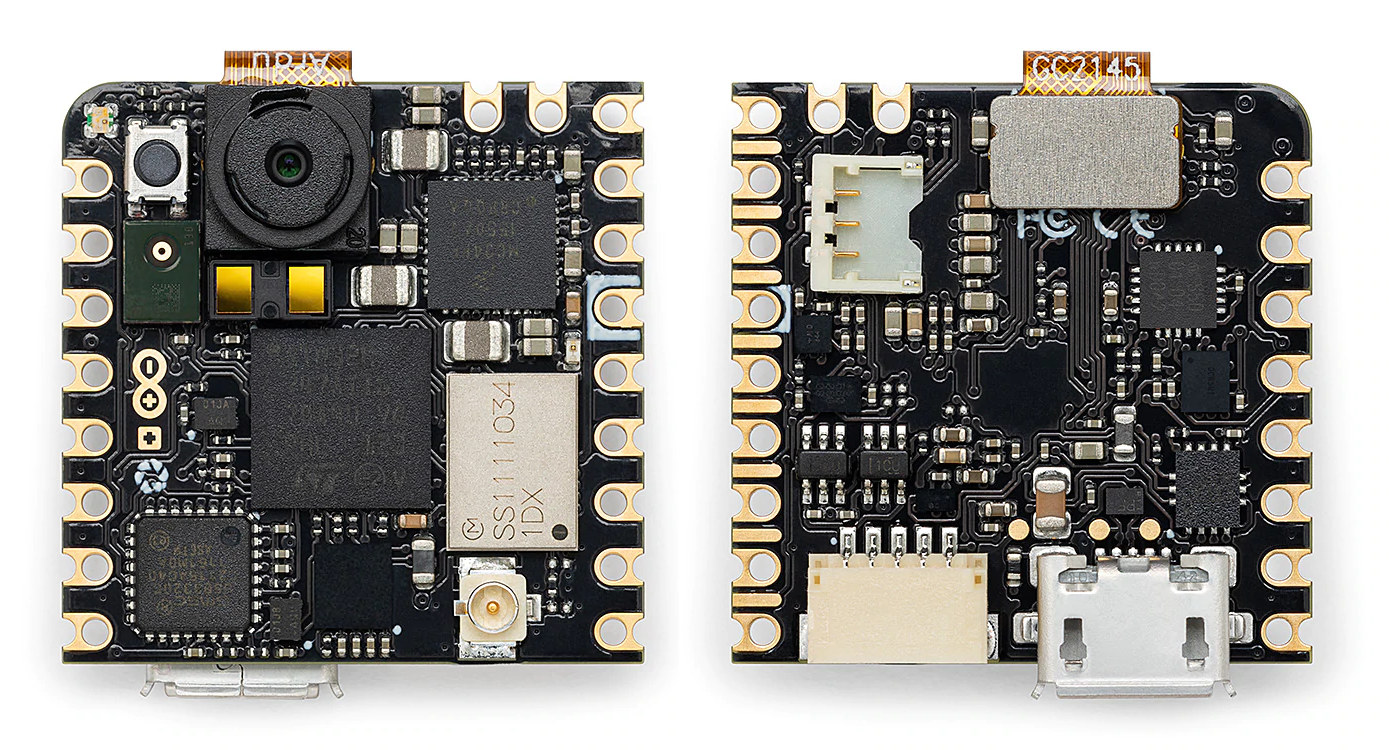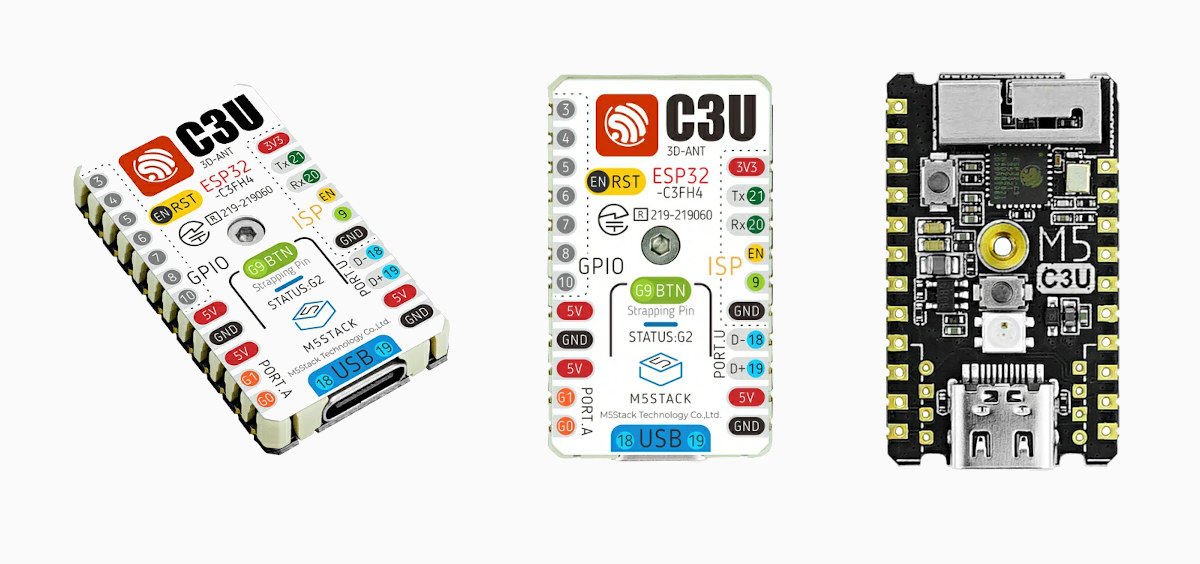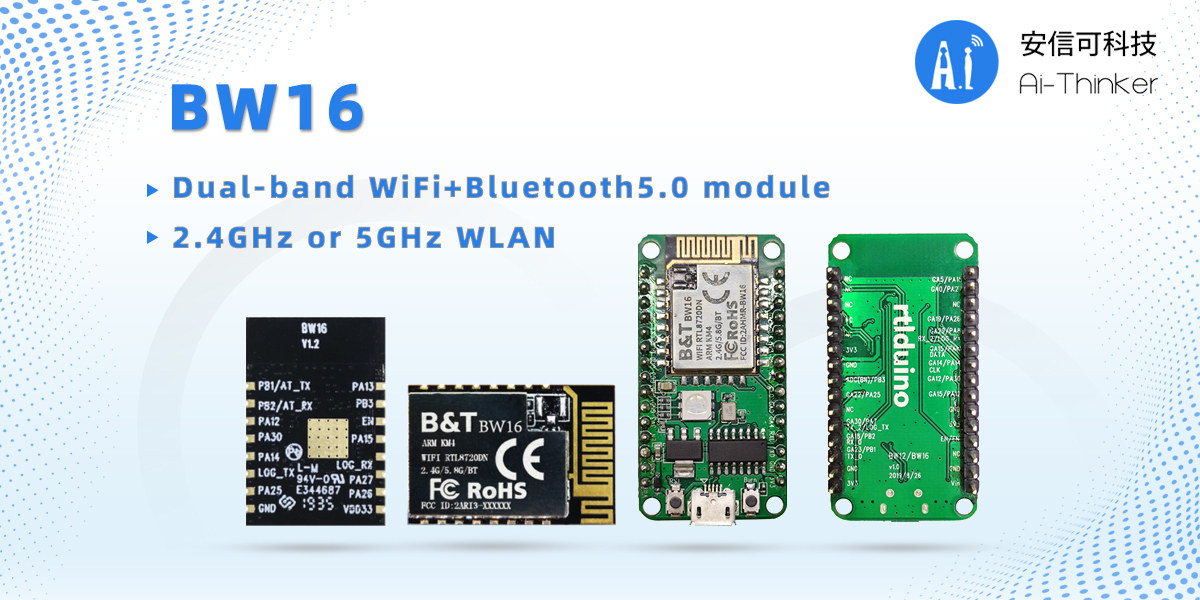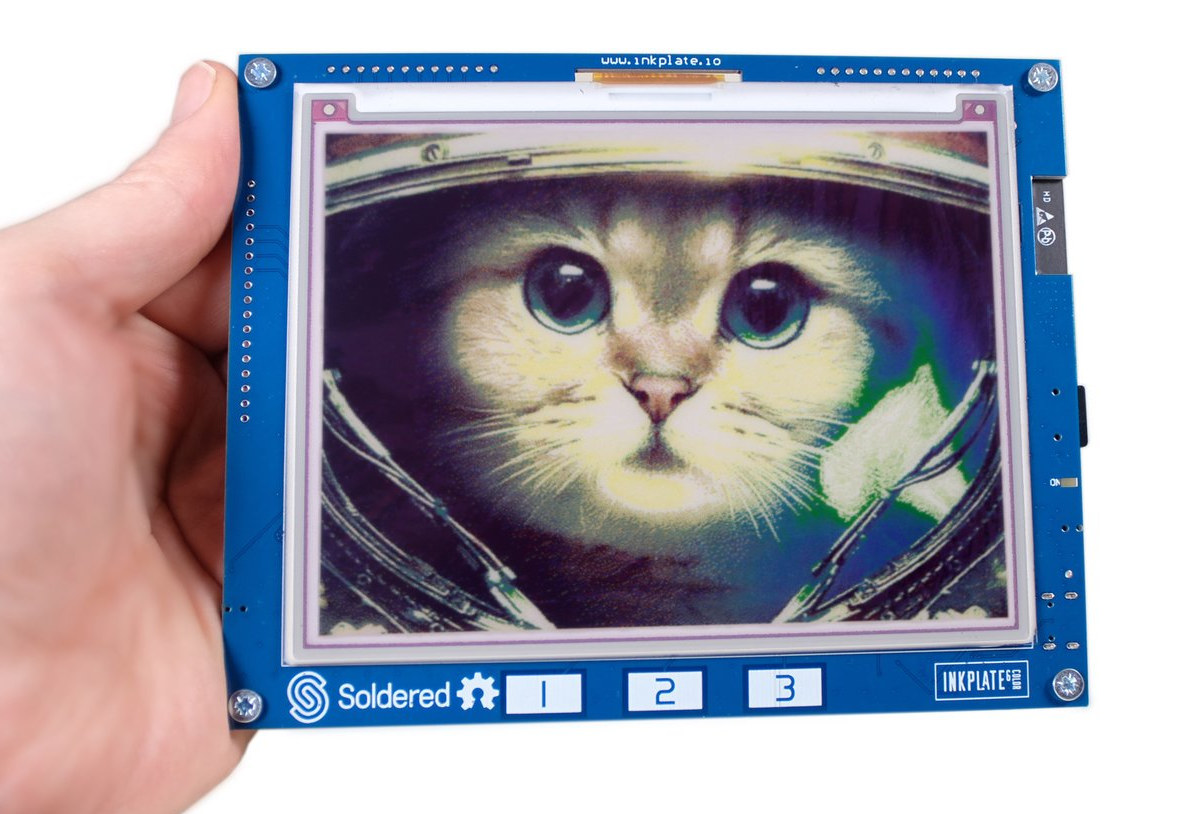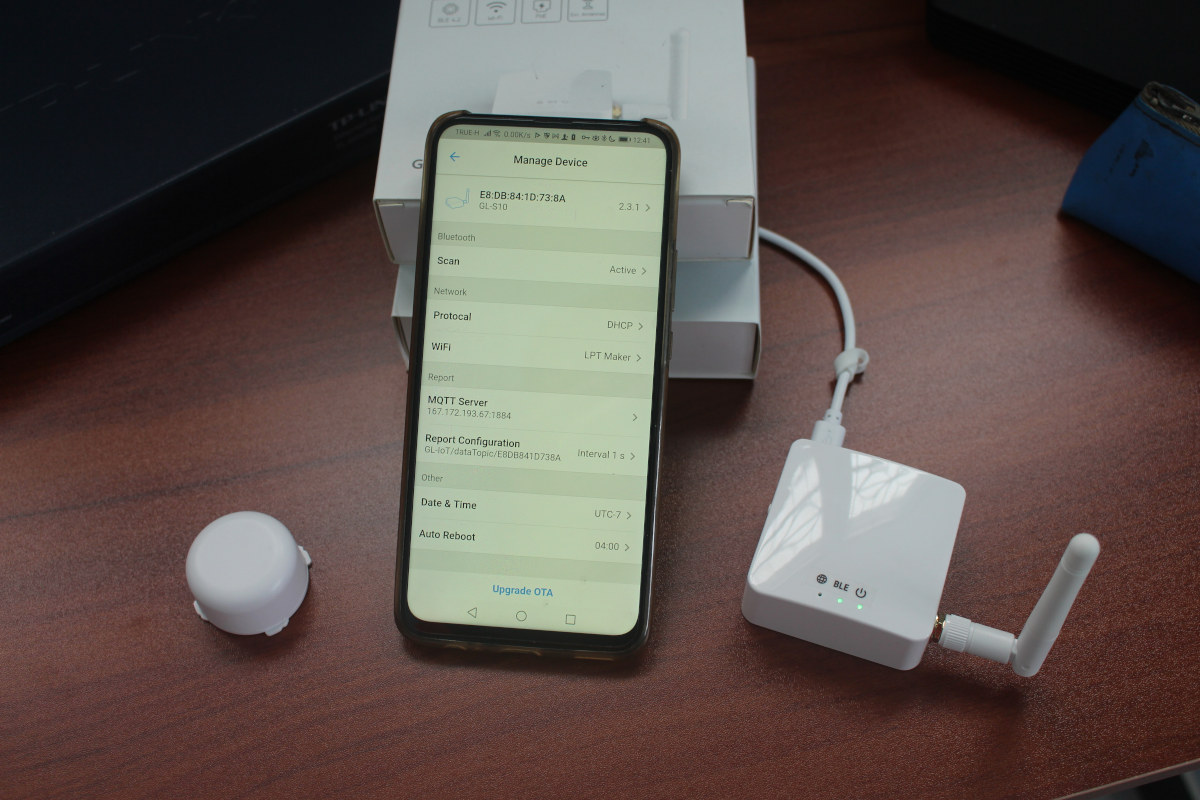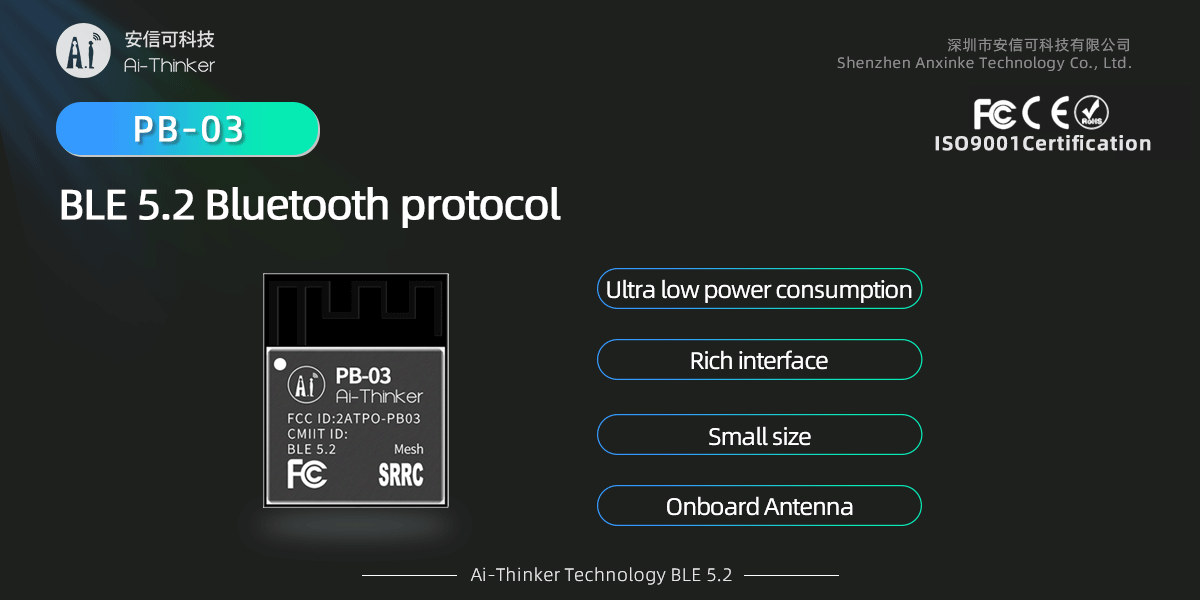Arduino Nicla Vision is an ultra-compact (~2.3×2.3 cm) board powered by an STMicro STM32H7 dual-core Cortex-M7/M4 microcontroller, and equipped with a 2MP camera, a WiFi & Bluetooth LE module, and a few sensors. Those features make the board suitable for machine vision and edge computing applications such as asset tracking, image detection, object recognition, and predictive maintenance. For instance, image detection, facial recognition, automated optical inspection, vehicle plate reading, or gesture recognition can be added to projects, either using Nicla Vision as a standalone board or in combination with Portenta or MKR boards. Arduino Nicla Vision specifications: Microcontrollers – STMicro STM32H757AII6 dual-core MCU with Arm Cortex M7 @ 480MHz, Cortex-M4 @ 240MHz, 2 MB flash, 1MB RAM Storage – 16MB QSPI flash Connectivity – 2.4GHz WiFi 802.11b/g/n up to 65 Mbps and Bluetooth 5.1 BR/EDR/LE via Murata 1DX module Camera – 2MP GC2145 color camera. USB – Micro USB port […]
M5Stamp C3U IoT module relies on ESP32-C3’s own USB interface for firmware programming
M5Stamp C3U is an update of the M5Stamp C3 RISC-V IoT module with heat-resistant cover, support for WiFi 4 and Bluetooth 5.0, that does without CH9102 USB to TTL chip, relying instead on the internal USB interface of ESP32-C3 processor to handle serial programming of the firmware, and gaining on extra GPIO pin in the process. While several ESP32 processors come with a built-in USB interface, many boards still use an external USB to TTL chip such as CH340 or CP2102 to handle the serial interface used for debugging and flashing the firmware likely because of limitations when using ESP32-C3’s USB serial/JTAG controller console, but M5Stack probably considered those to be workable, and the small cost-saving beneficial. M5Stamp C3U specifications: WiSoC – ESP32-C3FH4 32-bit single-core RISC-V processor @ up to 160 MHz, with 384KB ROM, 400KB SRAM, 8KB RTC SRAM, 4MB embedded flash, WiFi and Bluetooth Connectivity 2.4 GHz WiFi […]
Silicon Witchery S1 module combines nRF52811 Bluetooth SoC with Lattice iCE40 FPGA
Sweden-based Silicon Witchery S1 is a tiny module combining Nordic Semi nRF52811 Bluetooth LE SoC with Lattice Semi iCE40 FPGA designed for battery-powered applications leveraging DSP and machine learning (ML) at the edge. The S1 module features just four key components in a tiny 11.5 x 6 mm form factor and targets applications requiring “demanding” algorithms while consuming as little energy as possible. Silicon Witchery S1 module specifications: MCU – Nordic Semi nRF52811 Arm Cortex-M4 MCU @ 64 MHz with Bluetooth 5.2 support including Long Range, Thread support. FPGA – Lattice Semi iCE40 FPGA with 5k LUT and DSP blocks. Storage – 32 Mbit flash storage. Integrated antenna, passives, and crystals. I/Os – 20x castellated holes with 8x FPGA IO include I3C, I2C, SPI, and USB. 2x nRF GPIO pins with ADC and low power wake. SWD pins for debugging Power Supply Lithium battery charging and monitoring. 3x adjustable Vout […]
Ai-Thinker BW16 is a dual-band WiFi & Bluetooth 5.0 IoT module (Sponsored)
Many users prefer the ESP32 when implementing WiFi & Bluetooth into their IoT projects. But Ai-Thinker BW16 offers dual-band WiFi 4 & Bluetooth 5.0 connectivity through Realtek’s RTL8720DN chipset which may provide more reliable connectivity where the 2.4 GHz band is crowded. The module integrates an Arm Cortex-M4F compatible high-performance MCU, an Arm Cortex-M0 compatible low power MCU, WiFI 802.11 a/b/g/n, MAC, Bluetooth and RF baseband, and provides a set of configurable GPIO ports to control peripheral devices. BW16 module One significant difference between BW16 and ESP32 module is that it has two serial port interfaces, so attention should be paid to the wiring of the UART interfaces. The following diagram shows the two serial interfaces of the BW16 module. One of the module serial interfaces is used to send and receive AT commands to control connectivity from a host processor or microcontroller, while the other serial port is used […]
Inkplate 6COLOR – A 5.8-inch e-paper color wireless display (Crowdfunding)
Inkplate 6COLOR is a 5.8-inch color e-paper display equipped with ESP32 WiSoC to provide WiFi and Bluetooth LE connectivity, and programmable with the Arduino IDE or MicroPython. We’ve covered Inkplate ESP32-based e-paper displays since Inkplate 6 was launched in 2019, and since then the company introduced a larger model and an upgraded variant with a touchscreen display and higher resolution. But so far, all were grayscale models, and Inkplate 6COLOR is the first to come with color, or more exactly 7 colors. Inkplate 6COLOR specifications: Wireless module with dual-core ESP32 processor, Wi-Fi 4 & Bluetooth 4.0 (BLE) connectivity External storage – MicroSD card socket Display – 5.8-inch, 600 x 448 e-paper display with 7 colors (Black, White, Red, Yellow, Blue, Green, Orange) 128 DPI 25 seconds refresh time (manufacturer); tested by Inkplate: 10 to 11 seconds USB – 1x USB Type-C port for programming and power Expansion – Headers for […]
Review of GL.inet GL-S10 BLE to MQTT gateway with MQTT X open-source client
I started the review of GL.inet GL-S10 BLE to MQTT gateway in December by doing an unboxing and a teardown of the ESP32 gateway and BLE beacon provided. I’ve now had to play with the device and recommended app and software, and it took longer than expected since I encountered several issues during testing, most of which should now be resolved with new firmware, and documentation will be updated very soon. I mostly followed the steps from the detailed user manual for this review. The first time I did was to install the GL-S10 Tool App for Android, then power the gateway while pressing its button to enter pairing mode and soon enough the gateway was detected. Note you should probably not share the MAC address of your devices as there’s no security by default, and anybody would be able to access the information with the tools we’ll use below. […]
PB-03 – A Bluetooth LE 5.2 module for the Smart Home, wearables, IoT, etc… (Sponsored)
What changes does Bluetooth LE 5.2 (BLE 5.2) bring? Maybe PB-03 module can tell you. PB-03 is a BLE module developed by Shenzhen Ai-Thinker Technology based on PHY+ PHY6252 32-bit microcontroller (see PDF datasheet) that offers high integration and low power consumption down to 0.3uA in OFF mode, and is well suited to various applications such as IoT, mobile devices, wearable electronic devices, and smart homes. PB-03 module’s highlights Ai-Thinker PB-03 provides an upgrade to earlier PB-01/02 modules with the following highlights: MCU – PHY6252 microcontroller with 256KB flash, 64KB SRAM Supports BLE 5.2 and Bluetooth Mesh Equipped with an on-board PCB antenna Up to 2 Mbps data rate I/Os – UART, PWM, ADC, I2C, SPI, PDM, DMA, and up to 19 IOs. Security – AES-128 encryption hardware Power consumption (PHY6252) 0.3uA @ OFF Mode (IO wake up only) 1uA @ Sleep Mode with 32KHz RTC 3.5uA @ Sleep Mode […]
Silicon Labs BG24 and MG24 2.4 GHz wireless MCU’s quadruple AI performance at a fraction of the energy
Machine Learning is getting everywhere including into 2.4GHz wireless microcontrollers with SIlicon Labds BG24 Bluetooth and MG24 multi-protocol Cortex-M33 microcontrollers that improve AI/ML performance by 4 times using 1/6th of the energy thanks to a built-in AI accelerator. That makes the new microcontrollers suitable for battery-powered edge AI devices with support for Matter (coming soon) as well as PSA Level 3 Secure Vault protection. Silicon Labs expects the chips to be found in various smart home, medical and industrial applications. BG24 and MG24 share the same block diagram and the same specifications apart from the supported wireless protocols: MCU core – Arm Cortex-M33 @ 78.0 MHz with DSP instruction and floating-point unit Memory – Up to 256 kB RAM data memory Storage – Up to 1536 kB flash program memory Wireless CPU – Arm Cortex-M0+ 2.4 GHz Radio Performance -104.5 dBm sensitivity @ 250 kbps O-QPSK DSSS -104.9 dBm sensitivity […]


